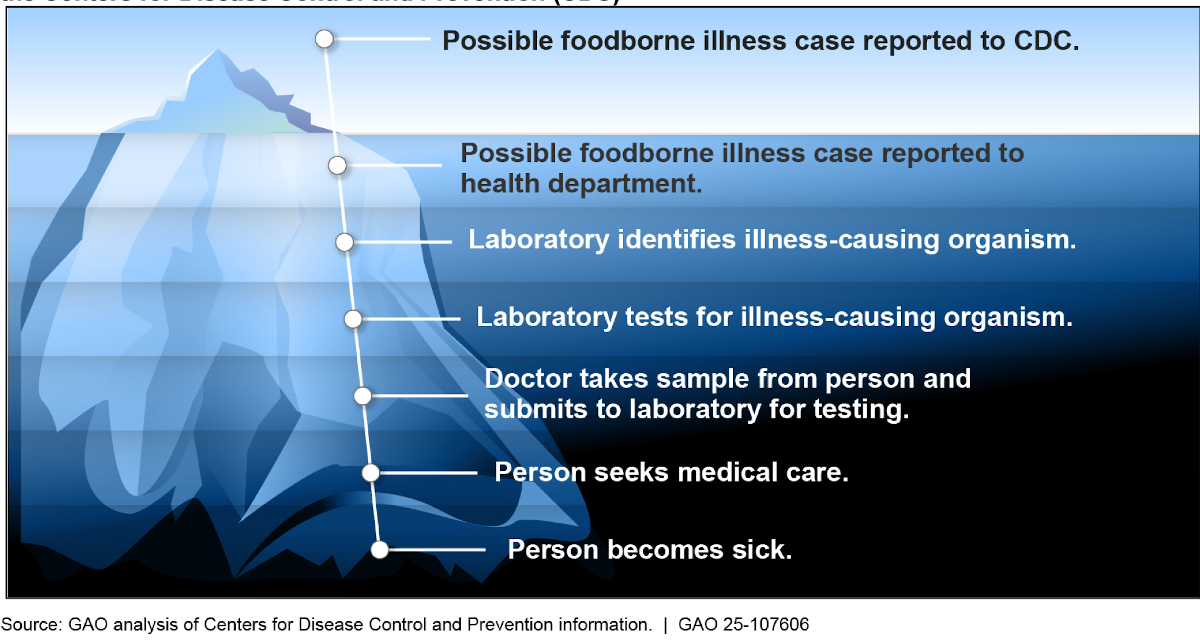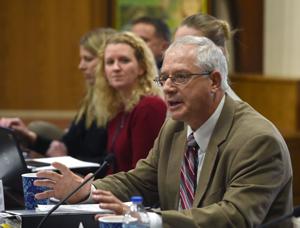
A new report from the Government Accountability Office states that most goals to reduce foodborne illnesses in America have not been met. The GAO report points out that the safety and quality of the U.S.
food supply is governed by at least 30 laws and 15 governmental agencies. The federal food safety system is supplemented by states, localities, Tribes and territories. Most goals established by individual federal agencies and joint-agency efforts have not been met, according to the GAO report.

The report says a national food safety strategy could help achieve goals to improve the safety of the food supply. “. .
. the most recently available data show that FDA (the Food and Drug Administration) and FSIS (the Food Safety and Inspection Service of the USDA) have not met their goals — in one case, by a wide margin,” says the GAO report. “Specifically, FSIS’s goal was to reduce the proportion of poultry samples with Salmonella serotypes commonly associated with human illness by 4 percent; however, the proportion of such samples increased by 22 percent that year.
” The GAO also found that a working group, which includes officials from the Centers for Disease Control and Prevention, the FDA and FSIS, has made little progress in setting goals associated with the Healthy People 2030 initiative. “. .
. the working group has reported limited progress. For example, six metrics aimed at reducing foodborne illness outbreaks are still under development and do not have defined baseline data to measure progress about 5 years into the 10-year cycle,” the GAO reported.
During President Trump’s first term, in 2017, the GAO called for the Executive Office of the President to develop and implement a national strategy for overseeing food safety. If implemented, according to the new report, such action could address GAO’s prior matters for congressional consideration about a government-wide performance plan and sustained leadership for food safety. “GAO has long reported that the fragmented nature of the federal food safety oversight system causes inconsistent oversight, ineffective coordination, and inefficient use of resources,” according to the report.
“. . .
Since 2007, GAO has cited federal oversight of food safety as a high-risk issue.” Impact of foodborne illnesses The CDC reports that foodborne illnesses in the United States are mainly caused by six pathogens — Salmonella, Listeria monocytogenes, Campylobacter, Clostridium perfringens, Shiga toxin-producing Escherichia coli and norovirus. Foodborne pathogens can be transmitted through multiple types of food and, therefore, can affect both FDA- and FSIS-regulated foods.
The GAO report cites two Salmonella outbreaks in 2024. One of the outbreaks was attributed to cucumbers, an FDA-regulated food, and the other attributed to charcuterie meats, an FSIS-regulated food. Collectively the outbreaks caused 650 confirmed illnesses and about 180 hospitalizations.
According to the GAO report, the CDC has found that only a small proportion of all foodborne illnesses are diagnosed and reported to public health authorities. For example, the CDC has estimated that foodborne Salmonella causes 29 illnesses for each case that is detected through laboratory testing. A case of foodborne illness may go undiagnosed if, for example, a sick person does not seek medical treatment.
According to CDC officials, some cases of foodborne illness may not be investigated or reported because of resource limitations at the state or local level. “Foodborne illness also has widespread economic consequences, costing Americans an estimated $75 billion (in 2023 dollars) annually in medical care, lost productivity, and premature deaths, including those associated with secondary chronic illnesses and conditions that develop after the initial illness, according to a study by researchers from USDA’s Economic Research Service and collaborators,” according to the GAO report. The full GAO report is available here .
(To sign up for a free subscription to Food Safety News, click here).















